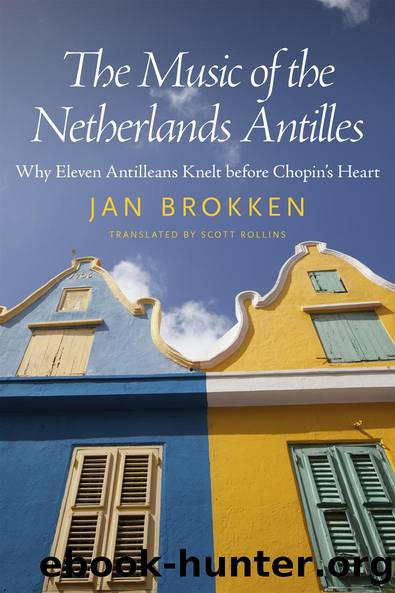The Music of the Netherlands Antilles by Jan Brokken

Author:Jan Brokken [Brokken, Jan]
Language: eng
Format: epub
Tags: History, Caribbean & West Indies, General, Music, History & Criticism, Genres & Styles, International
ISBN: 9781626743694
Google: awQbBwAAQBAJ
Publisher: Univ. Press of Mississippi
Published: 2015-01-12T02:50:07+00:00
18
Sensuous Movement
Slaves were forbidden to talk to one another while working on the plantations. They communicated with each other by singing. Nor were slaves allowed to live with one another as families; men and women lived in separate huts. They were, on the other hand, allowed to make babies; after all, that produced little slaves at no extra cost.
During the cutting of the maize, they sang about the hardships they endured and the circumstances in which they lived. To the slaves, song and protest were one and the same.
To give added luster to the New Year or the coming of rain, they danced to the rhythm of the tambú, the big drum. Depending upon how lenient their masters were, they either danced on the plantation grounds or at some out-of-the-way place. The dance was also called tambú.
Or they danced the tumba (a corruption of diumba, the name of a Congolese dance), usually on Saturday night, since they did not have to work on Sunday. The tambú came directly to the Dutch Antilles from West Africa, the tumba along a roundabout route via Andalusia, Hispaniola (that later separated into Haiti and Santo Domingo) and Cuba.
Accompanied by hand clapping and two instrumentsâthe iron herú and the drum stretched with sheepskinâthe tambú was sung and danced. The songs were scarcely different from the ritual singing I had heard in the jungles of equatorial Africa. They reminded me strongly of the mvett of the Fang, through its antiphony, the call and response, in which the solo male singer or female singer asks questions that are answered by the choir or bystanders.
Two distinct groups gradually formed among the slaves. Those who lived in town as domestic slaves took on the lifestyle of their masters and became makamba* pretus, or black-whites. Every white family owned four or five slaves who served as coachmen, cooks, gardeners, maid servants, or nursemaids. They were not allowed out on the street after 9 p.m., but during the day they did the shopping at the market or drove the Shon to the barracks or government buildings. Their fate was not much worse than those of servants in Europe; they were not free, but neither did they suffer in isolation; they were part and parcel of the whole kit and caboodle that made up a household in the eighteenth and nineteenth centuries. They heard the music of the whites and only turned back into Africans when they told the children the Anansi stories about the big, black spider who was too clever for the lion, snakes, and reptiles. Anansi symbolized the sun; its legs referred to its rays.
The field slaves were a thousand times worse off. They were seldom if ever allowed to leave the plantations. They worked there, lived there, and even if they were seriously ill or on their deathbed, they had to stay put. Their entire existence from cradle to grave took place on the plantation. In cultural terms this meant that after five, six, or seven generations they
Download
This site does not store any files on its server. We only index and link to content provided by other sites. Please contact the content providers to delete copyright contents if any and email us, we'll remove relevant links or contents immediately.
Kathy Andrews Collection by Kathy Andrews(10509)
The remains of the day by Kazuo Ishiguro(7543)
Spare by Prince Harry The Duke of Sussex(4188)
Paper Towns by Green John(4165)
The Body: A Guide for Occupants by Bill Bryson(3791)
Be in a Treehouse by Pete Nelson(3206)
Harry Potter and the Goblet Of Fire by J.K. Rowling(3025)
Goodbye Paradise(2950)
Never by Ken Follett(2873)
Into Thin Air by Jon Krakauer(2695)
The Remains of the Day by Kazuo Ishiguro(2614)
The Genius of Japanese Carpentry by Azby Brown(2602)
The Cellar by Natasha Preston(2592)
Drawing Shortcuts: Developing Quick Drawing Skills Using Today's Technology by Leggitt Jim(2529)
120 Days of Sodom by Marquis de Sade(2428)
Architecture 101 by Nicole Bridge(2348)
The Man Who Died Twice by Richard Osman(2290)
Machine Learning at Scale with H2O by Gregory Keys | David Whiting(2267)
Fairy Tale by Stephen King(2058)
